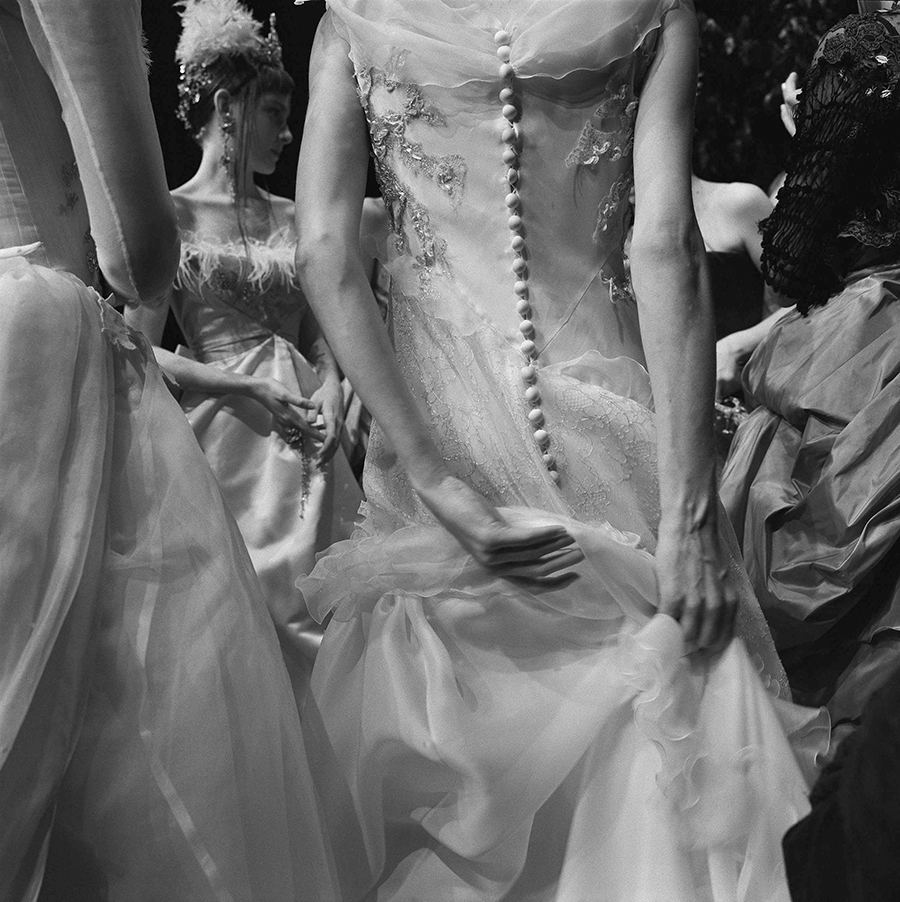 Lacroix show, Paris, 1998.
Lacroix show, Paris, 1998.
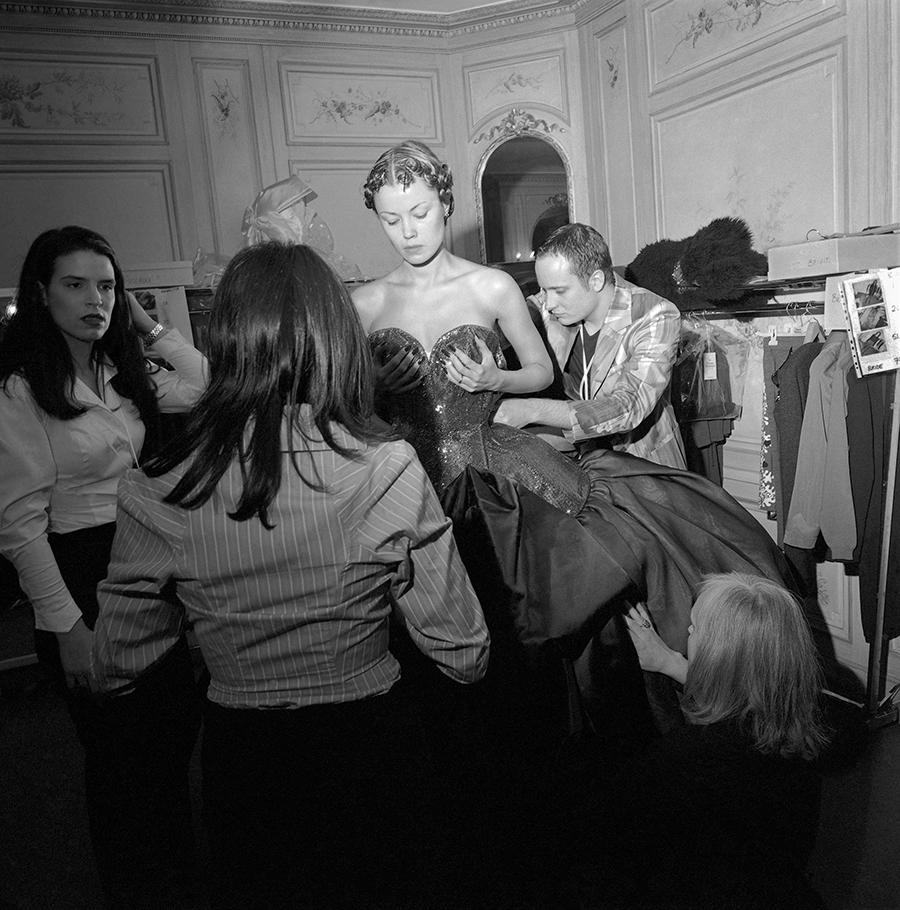 Vivienne Westwood, Tatiana Sorokko, Paris, 1998.
Vivienne Westwood, Tatiana Sorokko, Paris, 1998.
In London Was Ours: Diaries and Memoirs of the London Blitz, author Amy Helen Bell writes:
Diarists’ and memoirists’ descriptions of London during the Blitz were heavily indebted to modernist metaphors. Civilian writers used metaphors of reading, watching films and photography to link raids to the familiar, and to emphasize their own importance as viewers. Like the Crimean soldier and the Great War journalist in London, Londoners during the Blitz were awed, saddened and excited by what they saw during the Blitz, and by their own privileged position as witnesses. The use of modernist and surrealist imagery points to the new artistic and historical interrelationship between the spectator and the London they watched.
This is a fascinating book and I’ll be posting more excerpts as I read.
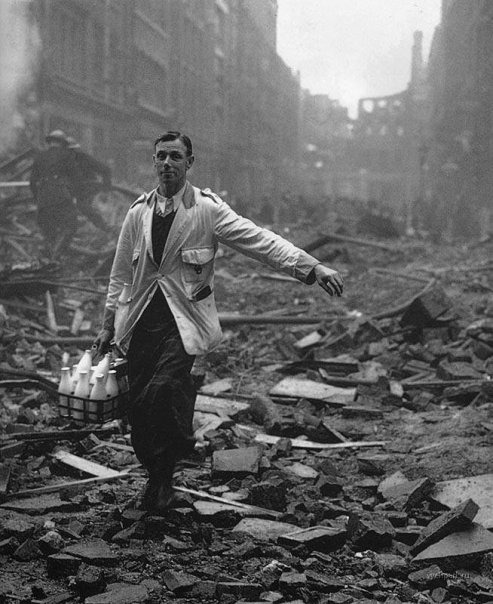
From the book’s paperback cover: A milkman delivering milk in a London street devastated during a German bombing raid. Photo by Fred Morley.
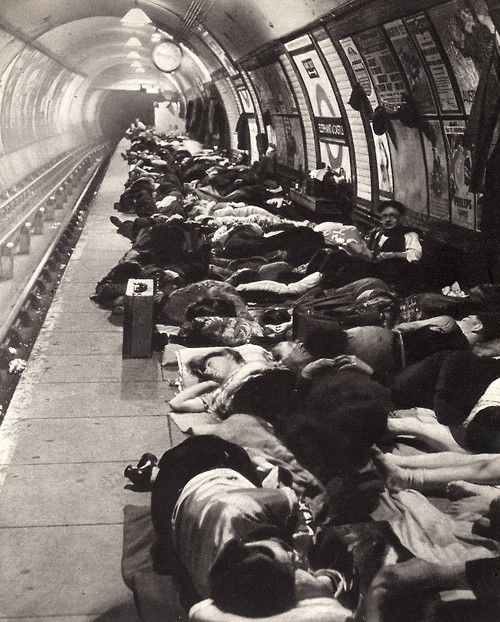
Bill Brandt, 1940. Taking shelter in the Elephant and Castle tube station.
Vienna, 1933. Bill Brandt.
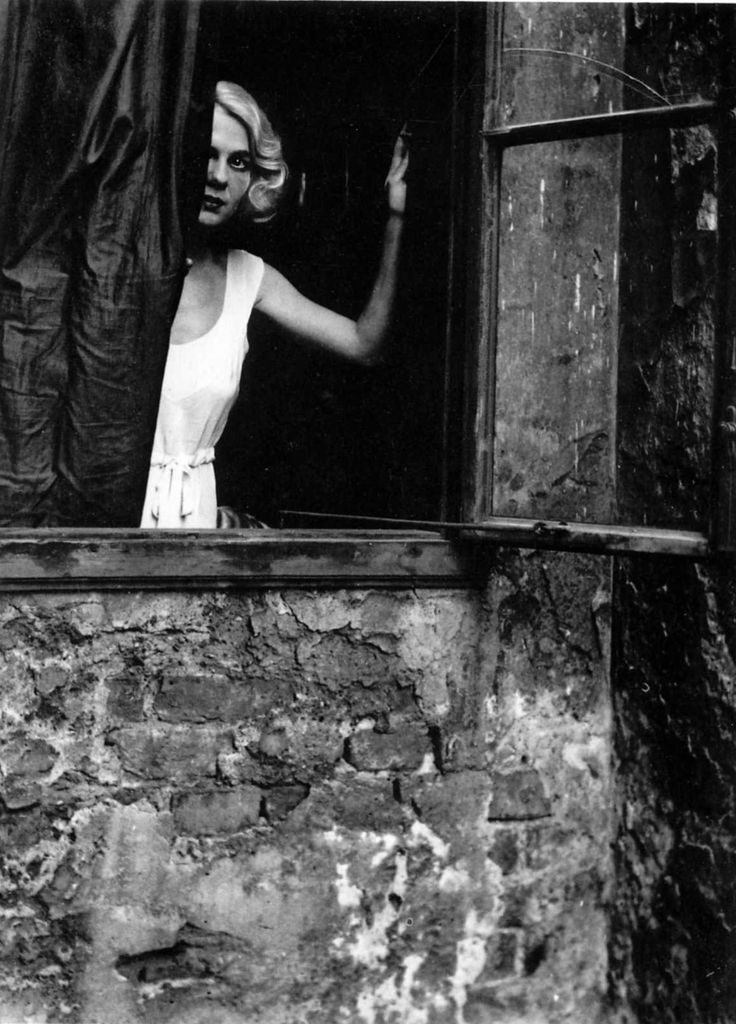
The Hollow Men
Mistah Kurtz-he dead
A penny for the Old Guy
I.
We are the hollow men
We are the stuffed men
Leaning together
Headpiece filled with straw. Alas!
Our dried voices, when
We whisper together
Are quiet and meaningless
As wind in dry grass
Or rats’ feet over broken glass
In our dry cellar
Shape without form, shade without colour,
Paralysed force, gesture without motion;
Those who have crossed
With direct eyes, to death’s other Kingdom
Remember us-if at all-not as lost
Violent souls, but only
As the hollow men
The stuffed men.
From the Guardian’s series My Best Shot, Anders Petersen explains this photo’s backstory and offers this advice: ‘People always talk about having to be strong. But for me, you have to be weak – weak enough to feel, to be involved, to be as you are. Don’t be strong, be weak.’
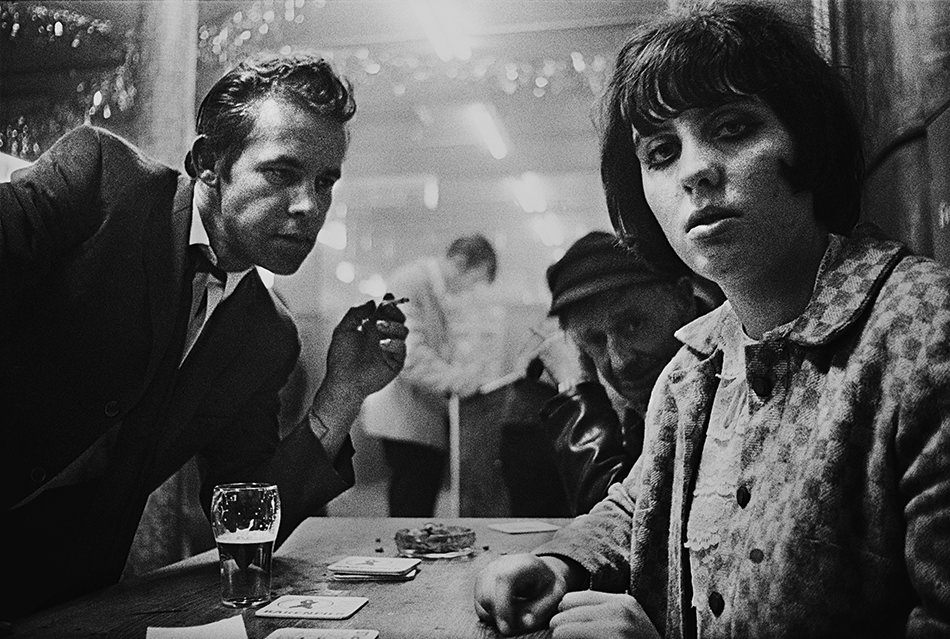
It was one in the morning and I was waiting for my friend Gertrude at Cafe Lehmitz in Hamburg. The place was chock full of people and there was great music playing on the jukebox. It was 1967. A man came up to me and asked about my camera, which was on the table. It was a Nikon F and I said it was a good camera. He said: “I have a nicer one.” His was a Kodak Retina 1C. We raised our beers and said cheers to the cameras. Then we danced with some beautiful ladies.
Suddenly, across the room, I noticed a group of people were throwing my camera back and forth, taking pictures of each other. I went over and said: “Please take a picture of me because it’s my camera.” OK, they said, then handed it back. So I took some pictures of my own – and that was how I started photographing in Cafe Lehmitz.
I kept taking shots there for the next three years, travelling back and forth to Stockholm, where I was studying photography, to develop my film. At the cafe, I would sleep in the kitchen for free, in exchange for looking after the cook’s children. My time there was very formative. The cafe even staged my first exhibition: I pinned 350 pictures above the bar and said if anyone recognised themselves they could take the picture down and keep it. After a few days the walls were empty.
This picture is all about the personalities. Lilly was everyone’s darling, a charismatic woman – many men were in love with her, and she knew it. The man on the left was known as Rose because of the tattoo on his chest. He was well dressed because he had come from work, a restaurant 10 minutes away. Every night, he would come to Cafe Lehmitz to see his friends, but mostly to see Lilly. Rose was a serious guy, and he only had eyes for her. Lilly was angry with me when I took this picture because I had been photographing her so much. She said: “Can’t you just behave like normal – have a beer and be like everyone else? Do you have to take pictures all the time? Please finito, now!” You see the little guy behind her? That is Scar. He was a very famous sword-swallower. He talked about it a lot and he got into a lot of fights – but he was still a nice man.
All sorts of people went to Cafe Lehmitz: locals, people from the harbour and surrounding cities, as well as a lot of elderly prostitutes from the St Pauli area. Old people went there who had had a hard life and were not accepted anywhere else. I took hundreds of photographs – it’s like a family album – but this one is special. I like these three characters and they are being themselves.
Six photos of Paris by Atget, from two books: Paris – Eugene Atget published by Taschen and Atget by John Szarkowski, published by MoMA. The latter book includes 100 plates with text by Szarkowski, much of which I found overwritten to the point of being intrusive. A typical example is his last paragraph accompanying the first photograph in the gallery below; it adds a layer of speculation that is not only indulgent, it distracts from the experience of viewing the photo.
Across the street from the Gobelins factory is a department store. Department stores changed the traditional ways of commerce and social interchange, and were therefore perhaps as unsettling and offensive to Atget–on the level of cultural and political principle–as shopping malls have been in our time to photographers such as Robert Adams. Nevertheless, it is wrong and self-defeating to photograph badly the subjects of which one disapproves. In fact, for a photographer as serious as Atget, it might be necessary to photograph a subject as well as he can before he knows what he thinks of it.
While Szarkowski does provide valuable context to many of the photographs, he too often, in passages like the above, tries to dazzle us with his references and asides, but ends up competing with Atget on the page. I much preferred the essay ‘Archive of Visions – Inventory of Things’ by Andreas Krase in the Taschen book.
The front cover of the book Tony Ray-Jones by Russell Roberts features a quote by Ray-Jones: ‘I have tried to show the sadness and humor in a gentle madness that prevails in people. The situations are sometimes ambiguous and unreal, and the juxtapositions of elements seemingly unrelated, and yet the people are real. This, I hope, helps to create a feeling of fantasy. Photography can be a mirror and reflect life as it is, but I also think that perhaps it is possible to walk, like Alice, through a looking-glass, and find another world with the camera.’
Which of course he does.
These are just a few photos from this very fabulous book. Take a look.